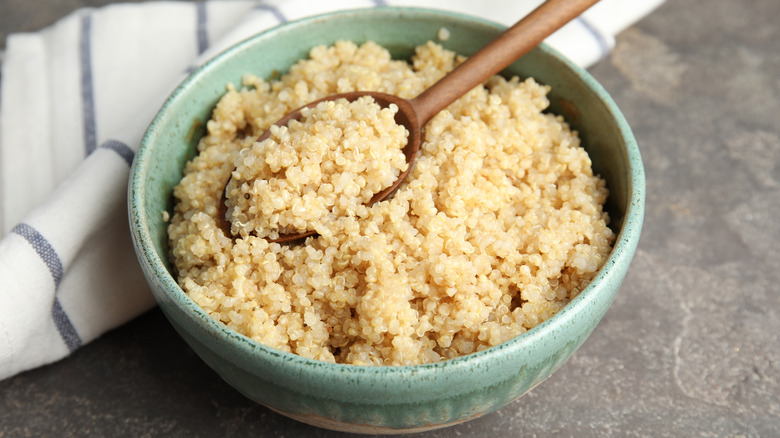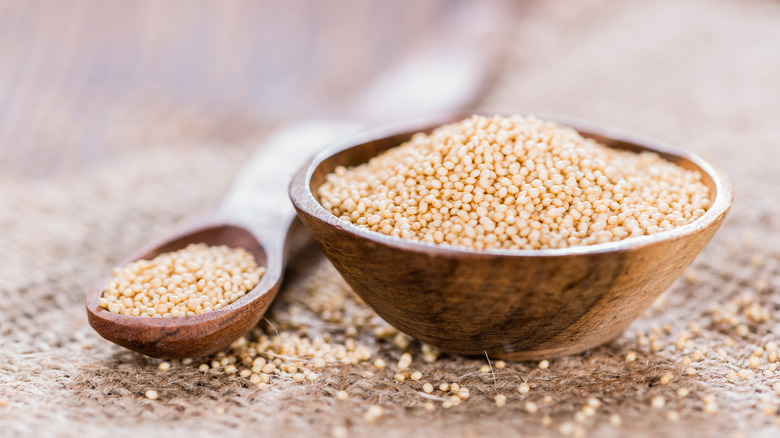Amaranth Vs. Quinoa: What's The Difference?
You're likely familiar with quinoa, a tiny grain that packs a powerful nutrient punch. A great source of manganese, phosphorus, magnesium, and folate, quinoa is a whole grain and a complete protein, per Harvard, as it contains all nine essential amino acids that your body can't produce on its own. One cup of cooked quinoa contains approximately eight grams of protein and five grams of fiber and it's an excellent source of plant protein.
This also means that it can be worked into your Meatless Monday meal plan in a number of delicious ways. Try these gluten-free quinoa stuffed peppers or quinoa fried rice for a hearty and healthy meat-free entrée. Due to its mild flavor, there are also many common quinoa substitutes you can swap out in recipes, including amaranth, a similar ancient grain. But how exactly does amaranth compare to quinoa when it comes to both taste and nutrition?
Here are the differences between quinoa and amaranth
The first big difference is taste. While quinoa is mild and acts as a great base for a number of dishes, amaranth has a bolder taste, with a sweet and nutty flavor, per Food Network. The second big difference is nutritional content. While amaranth is similar to quinoa in that it is also gluten-free and is a good source of manganese, phosphorus, and folate, the protein content is a bit higher. One cup of cooked amaranth contains nine grams of protein — among the highest protein content of any grain.
Amaranth is also a better source of iron, as it provides a little over five milligrams of iron per cooked cup, whereas quinoa contains nearly three milligrams of iron per cooked cup, according to Healthline. While the recommended daily dose of iron varies based on a number of factors, such as age and gender, per Harvard, iron is an essential mineral that keeps your blood healthy.
So, if you want to up your protein content and are looking for a more robust flavor, amaranth is a decent swap for quinoa. Try kicking off your day on a healthy note with this amaranth breakfast bowl recipe, packed with good-for-you ingredients like buckwheat, almonds, and tahini.

